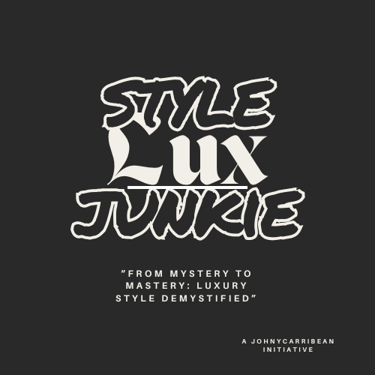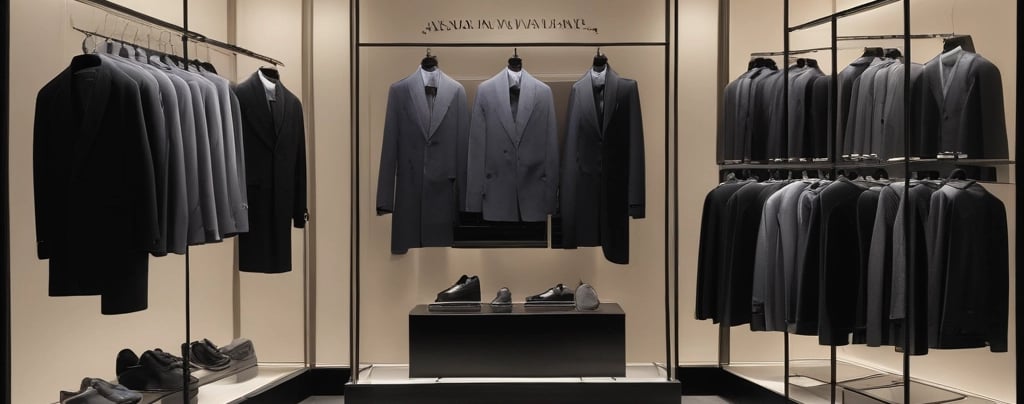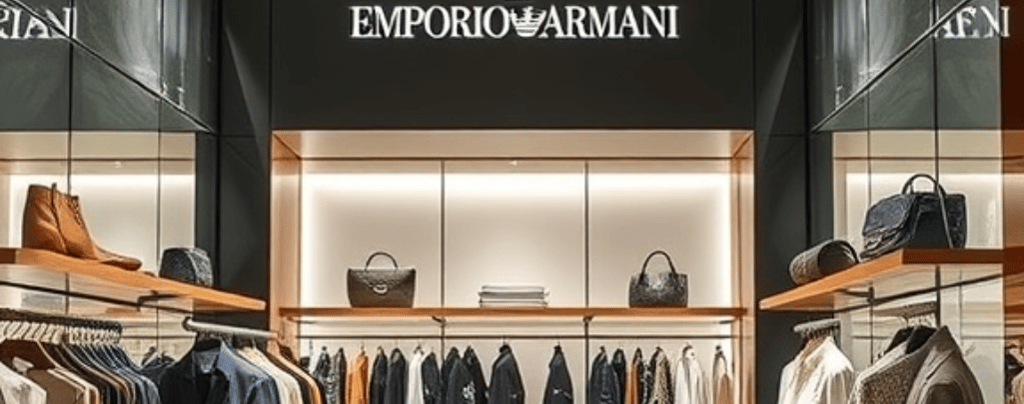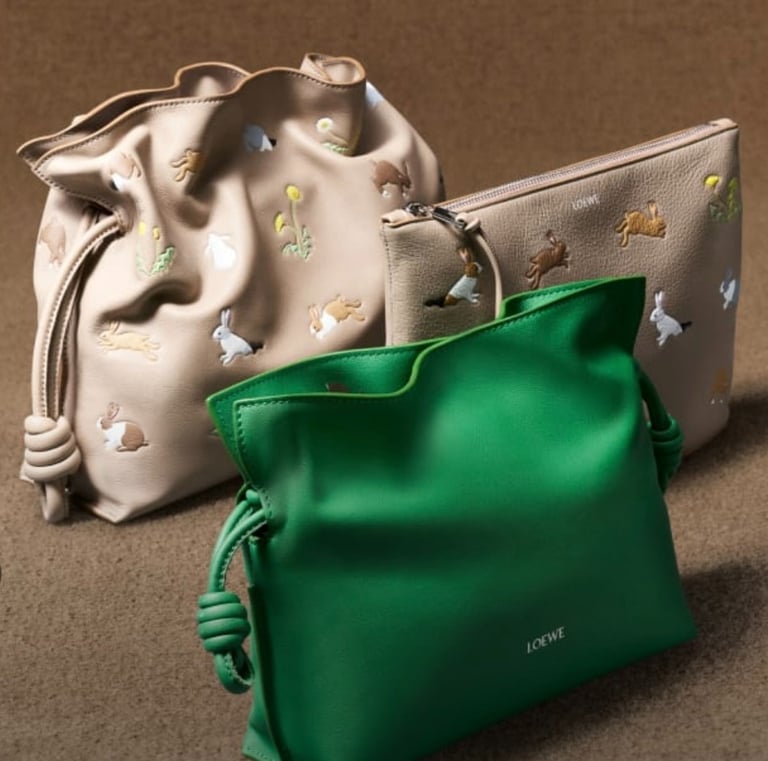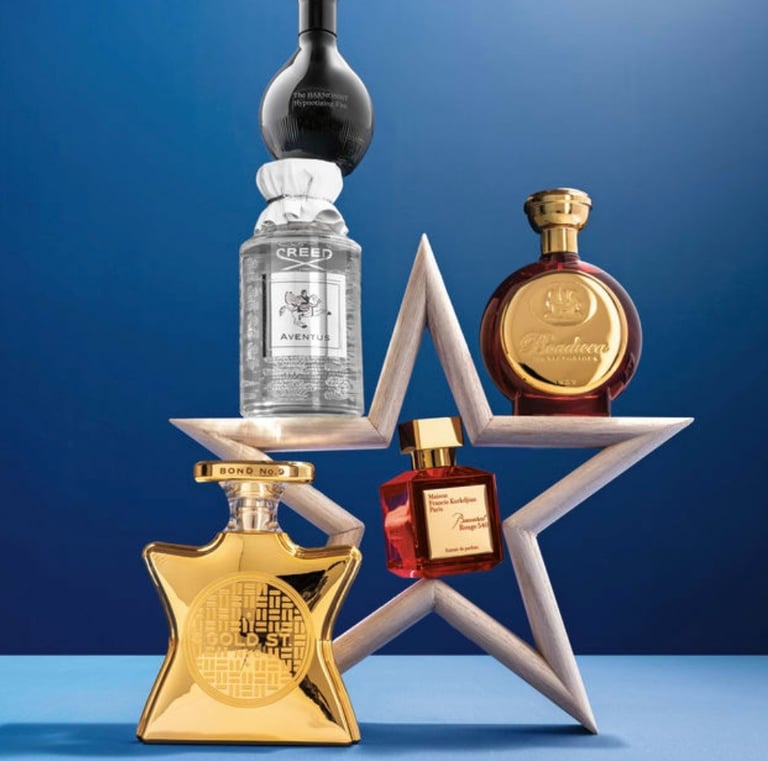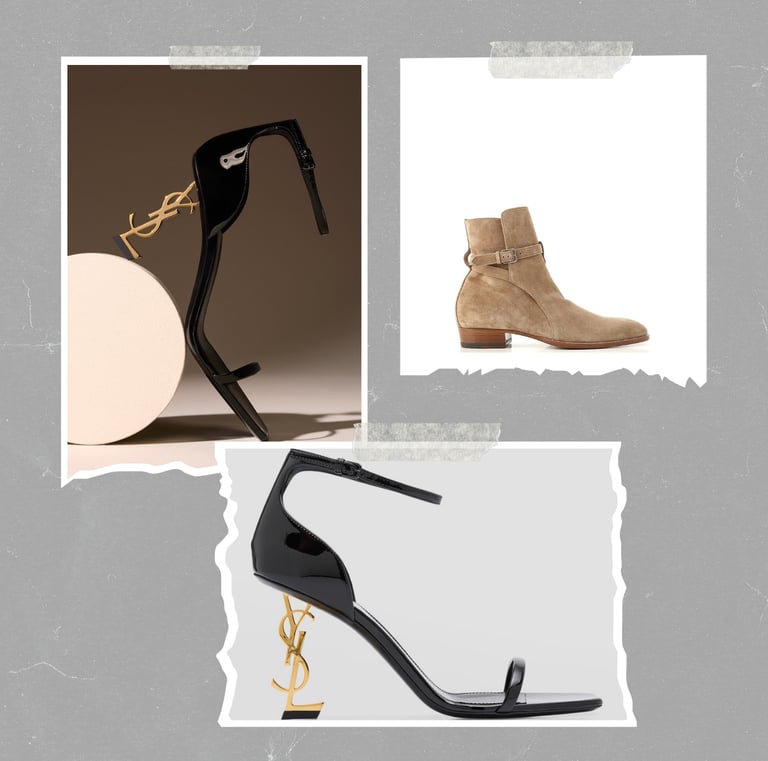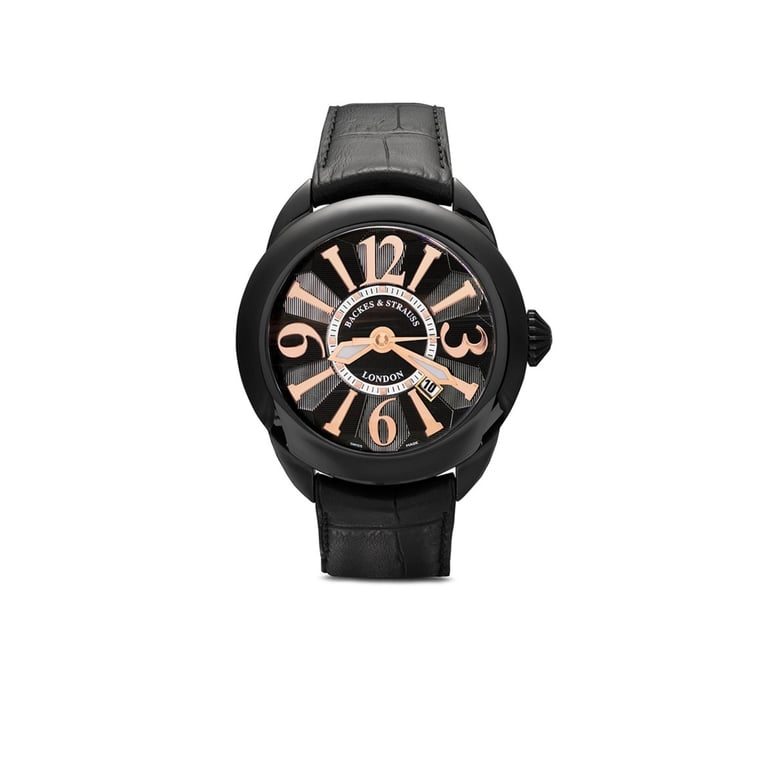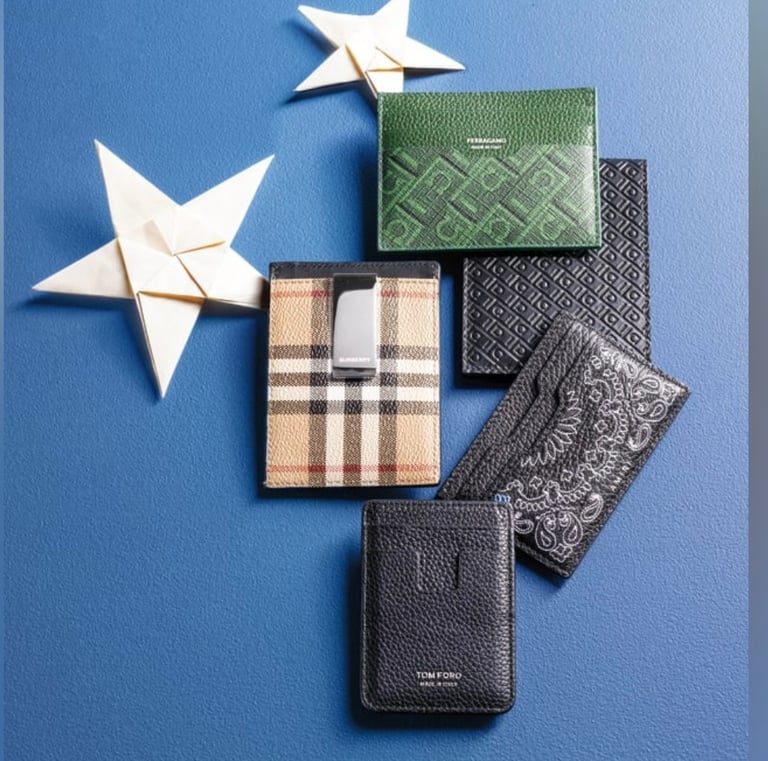Why Designer Brands Create Sub-Labels: A Spotlight on Giorgio Armani and Other Luxury Fashion Houses
Have you ever wondered why some of the world’s most prestigious fashion houses create multiple sub-labels instead of focusing solely on their main brand? Is it a marketing strategy, a way to reach different consumer segments, or a necessity to stay relevant in an ever-evolving industry?
DESIGNER SPOTLIGHT: LATEST UPDATES IN FASHION AND HAUTE COUTURE NEWS
2/2/2025
Key Differences Between Giorgio Armani, Emporio Armani, Armani Exchange, and EA7
Have you ever wondered why some of the world’s most prestigious fashion houses create multiple sub-labels instead of focusing solely on their main brand? Is it a marketing strategy, a way to reach different consumer segments, or a necessity to stay relevant in an ever-evolving industry?
In this article, we’ll explore the fascinating world of designer sub-labels, focusing on Giorgio Armani and other luxury fashion houses like Versace, Hugo Boss, and Dolce & Gabbana. By the end, you’ll have a deeper understanding of why high-end brands create multiple tiers within their fashion empire and how these sub-labels serve different demographics while maintaining brand prestige.
Giorgio Armani, Emporio Armani, Armani Exchange, and EA7 each represent a unique segment of the fashion market, catering to different tastes, styles, and price points. While Giorgio Armani focuses on high-end luxury, Emporio Armani offers a more accessible luxury experience, while Armani Exchange targets a younger, trend-conscious audience, and EA7 embodies a sporty, casual vibe.
Many major designers create sub-labels to diversify their offerings, reach broader customer bases, and maintain relevance in a fast-changing fashion landscape. This approach ensures they cater to multiple demographics without diluting the prestige of their core brand.
For example, Hugo Boss operates three major sub-labels: BOSS, which is known for high-quality business and casual wear, HUGO, which targets younger consumers with edgy, fashion-forward designs, and BOSS Athleisure, a premium line that blends comfort and performance for an active lifestyle. Each sub-label serves a specific function, allowing Hugo Boss to attract both traditional businessmen and street-style enthusiasts alike. The BOSS line remains the centerpiece, epitomizing elegance and tailoring, while HUGO brings a rebellious spirit to the brand, competing with contemporary streetwear labels.
Versace follows a similar pattern with its sub-labels. Versace Jeans Couture Collection offers more affordable luxury with high-end fabrics and modern silhouettes, allowing those with a taste for Versace’s bold aesthetic to access it at a slightly lower price point. Meanwhile, Versus Versace, founded by Donatella Versace, has been a space for creativity, targeted at younger audiences with a love for daring fashion statements. At the pinnacle of the Versace empire sits **Atelier Versace**, the haute couture line that produces custom, handmade pieces worn by celebrities and royalty. This segmentation enables Versace to engage various markets while maintaining its elite image in high fashion.
Similarly, Dolce & Gabbana balances multiple tiers of fashion under its umbrella. The main Dolce & Gabbana label is synonymous with classic Italian opulence, featuring signature Baroque influences and rich detailing. The D&G line was once its youthful, trend-driven sibling, featuring playful and more affordable collections. However, the company eventually discontinued the D&G label and merged it with the main line, choosing instead to focus on its Dolce & Gabbana Alta Moda collection—an exclusive, haute couture offering that represents the pinnacle of craftsmanship. The Alta Moda collection is highly personalised, with each gown being meticulously handcrafted for its clients, placing it in the same league as couture houses like Chanel and Dior.
For a deeper dive into how sub-labels shape the luxury fashion market, check out publications like Business of Fashion (BoF), Vogue (Vogue Business), and GQ (GQ Style).
Giorgio Armani: The Luxury Flagship
The sleek storefront of Giorgio Armani is a testament to timeless elegance. Inside, finely tailored suits and exquisite dresses reflect the brand’s dedication to impeccable craftsmanship.
Giorgio Armani is the pinnacle of the Armani empire, synonymous with refined sophistication. This is where high-end craftsmanship meets timeless style, making it the ultimate choice for those who seek luxury without compromise.
This flagship brand doesn’t chase trends—it defines them. It speaks to a clientele that values the art of dressing well, whether it’s for a gala, a business affair, or a red carpet event. Giorgio Armani’s designs are an investment in enduring elegance, a philosophy that has made it one of the most revered fashion houses in the world.
EA7: Athletic Wear Meets Fashion
EA7 bridges the gap between high fashion and activewear.
EA7 is where Armani meets athleticism, delivering a dynamic blend of sportswear and high fashion. Designed for those with an active lifestyle, EA7 pieces feature technical fabrics, ergonomic cuts, and modern aesthetics. Luxury brands often branch into activewear to reach broader audiences. Just as Hugo Boss created BOSS Athleisure for sophisticated sportswear and Versace dabbled in sports-inspired streetwear with Versus, EA7 caters to those who demand both form and function in their wardrobe.
Armani Exchange: Casual Style for the Youth
Armani Exchange focuses on urban designs meant for the young and style-conscious.
Armani Exchange embodies a youthful spirit, infusing contemporary fashion with a relaxed, effortless vibe. With bold graphics, modern cuts, and trend-forward pieces, this sub-label speaks to a generation that values self-expression.
Much like how Dolce & Gabbana’s D&G line once introduced a youthful, trend-driven approach, Armani Exchange captures a fresh audience that may later graduate to the refined aesthetic of Giorgio Armani. It’s about accessibility, ensuring that the Armani lifestyle is within reach for fashion-forward young adults.
The Strategy Behind Designer Sub-Labels
The existence of sub-labels is a strategic move for luxury fashion houses. By offering multiple tiers of fashion, designers can extend their reach without diluting their core identity.
For further reading, explore Harper’s Bazaar (Harper’s Bazaar), Luxury Daily (Luxury Daily), and WWD (Women’s Wear Daily).
Emporio Armani: Bridging High and Everyday Fashion
Inside an Emporio Armani boutique, sleek lines and modern silhouettes exude understated luxury. The collection balances accessibility with high-end craftsmanship.
Emporio Armani is where contemporary fashion meets timeless elegance. It’s an intersection between luxury and wearability, offering pieces that feel high-end without being overly formal. This sub-label is ideal for those who appreciate sophistication but seek designs that seamlessly transition from day to night.
Much like Hugo Boss’s BOSS line or Versace Jeans Couture Collection, Emporio Armani is tailored for individuals who want luxury with a modern, approachable twist. The quality remains high, but the price point and aesthetic make it more adaptable to everyday wear.
Conclusion: The Power of Sub-Labels in Luxury Fashion
Other designers follow a similar pattern. Take Ralph Lauren, for example. The Ralph Lauren Collection represents the pinnacle of luxury, while Polo Ralph Lauren is more casual and sporty. Then we have Lauren Ralph Lauren, which includes more affordable options for everyday wear.
Another great example is Calvin Klein. The main label emphasizes minimalism and chic aesthetics, while CK offers more accessible, casual pieces. Lastly, there's the Tommy Hilfiger brand, with its premium line standing for classic American style, and Tommy Jeans catering to a younger, denim-loving audience.
Fashion is an evolving landscape, and designers who create sub-labels understand the necessity of adaptation. Armani, Hugo Boss, Versace, and Dolce & Gabbana all utilize this strategy to extend their influence across different fashion tiers without sacrificing their brand identity.
Fashion is an evolving landscape, and designers who create sub-labels understand the necessity of adaptation. Armani, Hugo Boss, Versace, and Dolce & Gabbana all utilize this strategy to extend their influence across different fashion tiers without sacrificing their brand identity.
Each sub-label serves a distinct purpose—whether it’s luxury tailoring, youthful energy, or sporty refinement. These fashion houses master the art of segmentation, ensuring that no matter your style or budget, there’s always an opportunity to experience a touch of high fashion.
For exclusive insights and fashion trends, follow leading industry sources such as Fashionista (Fashionista), Esquire (Esquire Style), and Elle (Elle Fashion).
Find an exclusive collection of Emporio Armani Clothing and Accessories Here.
Find an exclusive collection of Giorgio Armani Clothing and Accessories Here.
Find exclusive collection of Armani Exchange Clothing and Accessories Here.
Find exclusive collection of EA7 Clothing and Accessories Here.
Leave a comment and let us know if you found this article helpful in understanding why brands seem to have different names or sub-labels.


